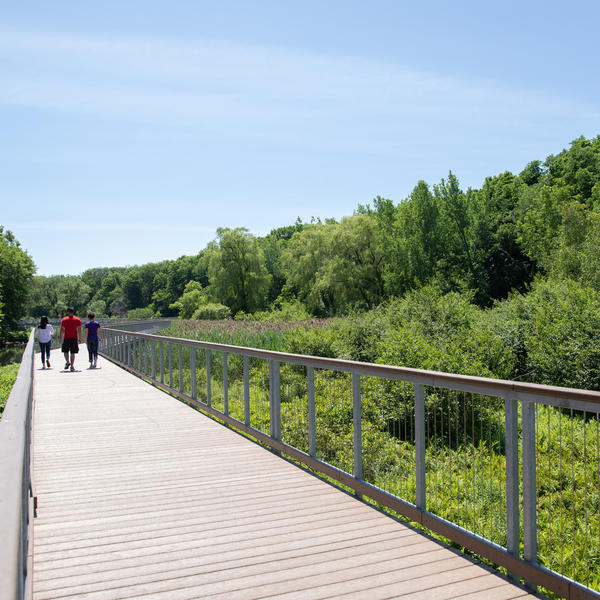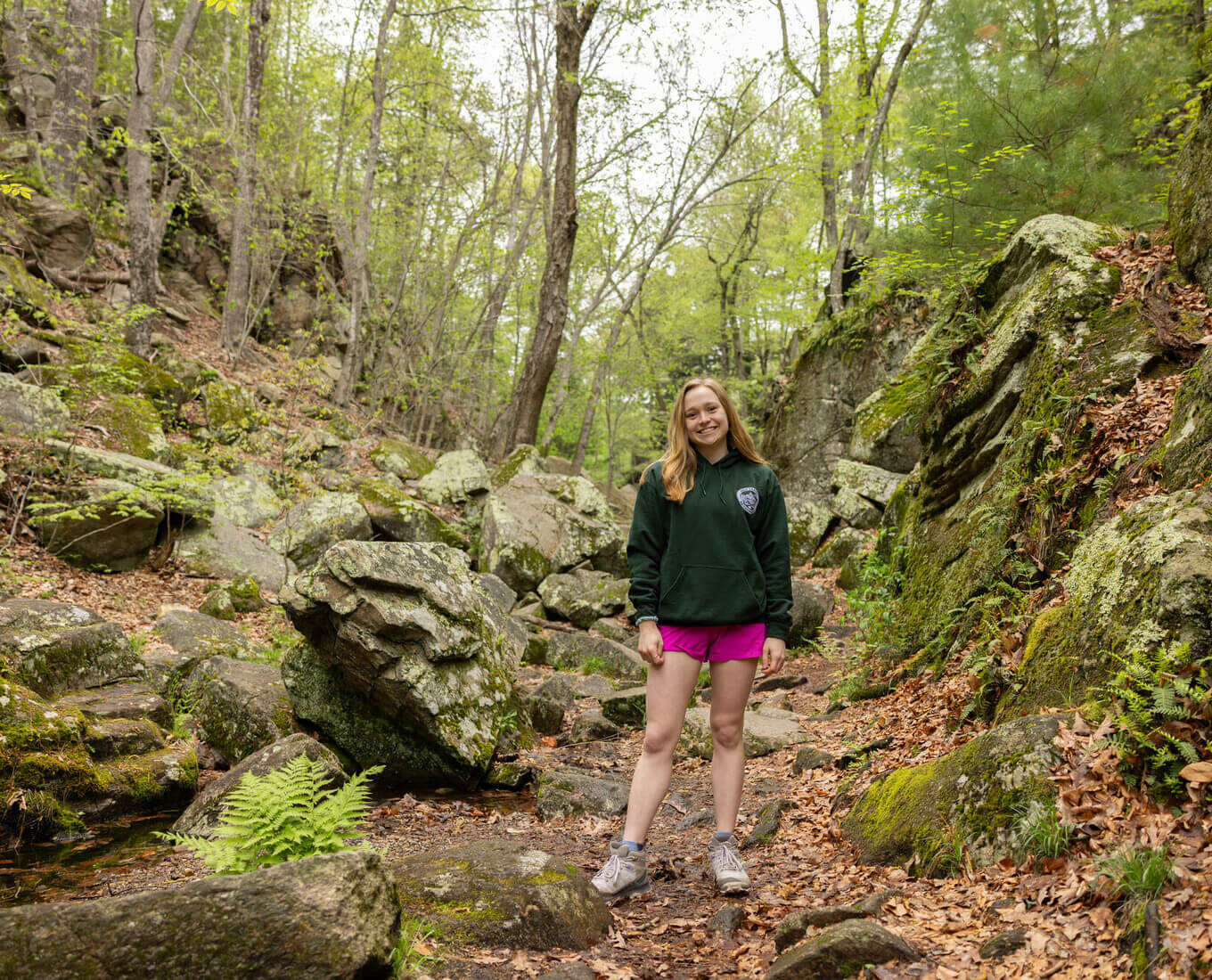When College of the Holy Cross was founded in 1843, it was built on land that had been home to Indigenous people for centuries. A new film by Holy Cross faculty and staff, community leaders and students seeks to enlighten that history.
&ab_channel=CollegeoftheHolyCross" target="_blank" rel="noopener">"Pakachoag: Where the River Bends," screened Nov. 10 in Rehm Library, documents the history of the relationship between the Nipmuc people and Holy Cross. It intends to foster dialogue between the indigenous community and the more recent settlers of Pakachoag Hill, on which the College lies.
Sarah Luria, professor of English and environmental studies, who worked on the project, said the film connected directly to the College's Jesuit identity.
"The film is about social justice—it seeks to make visible indigenous peoples of the Worcester area—as well as their lives today and connections to this place, connections that date back to long before European settlement here," Luria said. "The film is about our own identities, our understanding of ourselves, the Society of Jesus and the Catholic Church as part of the history and present of indigenous-American relations, and of our obligations to our local communities."
The film documents how Father James Fitton and Bishop Benedict Joseph Fenwick, S.J., purchased land on Pakachoag Hill to build Holy Cross and explores the forgotten history of the College and its relation to the indigenous people. Thomas Doughton, senior lecturer in interdisciplinary studies, said in the film that Nipmuc people are often portrayed as either disappeared or romanticized, and he hopes that the film will challenge those notions.
Other contributors to the project included Ian Kaloyanides, digital media services coordinator at Holy Cross; Sarah Klotz, assistant professor of English and director of Rhetoric and Composition; Fred Freeman, chairperson of the Nipmuc Cultural Preservation, Inc.; and students Christian Bachez '23, and Madison Chouinard '22.
President Vincent D. Rougeau offered opening remarks at the film screening.
"This film marks and acknowledges this campus's existence on the traditional lands of the Nipmuc people, as well as the involvement of the Society of Jesus in the lives of Native Americans from this region," Rougeau said.
In the documentary, Doughton and Colin Novick, an environmental historian from the Greater Worcester Land Trust, lead viewers on a walking tour of important Nipmuc sites on and around the Holy Cross campus that have been impacted by the growth of the College.
Pakachoag Spring, for example, provided fresh drinking water atop a hill, which allowed for a clear line of sight. The site was blocked off when a barn was placed there in the 1930s.
The Nipmuc people hope to preserve this site and honor its history. For Cheryll Toney Holley, a Nipmuc woman and Leader of the Hassanamisco Band of Nipmuc Indians in the Nipmuc Nations who appeared in the documentary, preservation does not mean leaving a site untouched; rather, it means having a relationship with the land. When the Nipmuc people lost their relationship to the land, they lost their relationship with each other.
A second site, John Eliot's Rock, was important to the Nipmuc people because John Eliot, a Puritan missionary, preached there. The Luth Athletic Complex was built on top of the site and the rock was obliterated by the construction of it.
Another central site for the Nipmuc community was the Blackstone River. Its original name was "Kattatuck," which means "The Great River." The English subsequently arrived and named it Blackstone. The recent construction of Blackstone Gateway Park, across McKeon Road from Holy Cross, displayed an effort to create an authentic connection between Holy Cross and the river.
Jack Hynick '22, who had done his own research on this topic through the Weiss Summer Research Program, said the work to come to terms with the College's history and relationship with Indigenous people was challenging, but it was a necessary precursor creating positive change.
Bachez, a student intern on the project, said his work on the documentary was illuminating.
"I had never considered or heard of there being a Native American presence on the Hill. I was eager to learn more," Bachez said. "I was really blown away by the deep and rich history of Pakachoag Hill."
This story was written by Editorial Assistant Julia Maher '23
Related Coverage:
Holy Cross Faculty Premiere "Pakachoag: Where the River Bends"
Tracing and Celebrating Indigenous Roots at the College of the Holy Cross
Worcester Telegram & Gazette, Sept. 28, 2021: Local Nipmuc Community, Land Trust Collaborate to Preserve Pakachoag Spring Site



